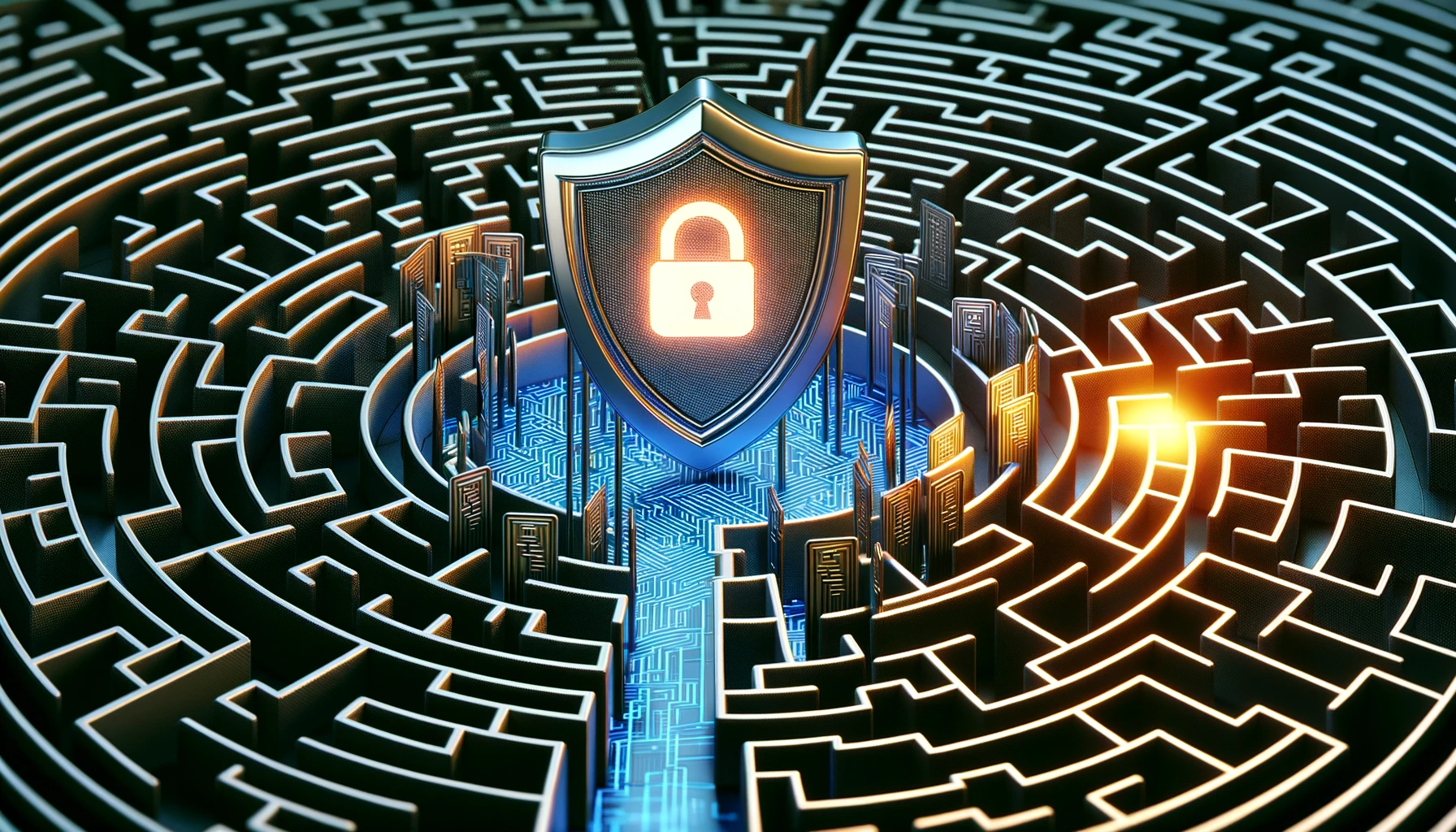
Table of Contents
Web security is essential to protect and ensure trust in any online presence. But what exactly does web security mean? In simple terms, it refers to measures and practices designed to protect the information and integrity of a website. From protecting sensitive data to preventing unauthorized access, web security encompasses a set of strategies and tools designed to maintain a secure and trusted digital environment. This article aims to provide you with clear and understandable definitions of the key concepts related to web security,
What is Web Security?
Web Security is about protecting a website and the information it contains. It also ensures that the content of the website is not changed without permission.
Its importance lies in maintaining the trust of the people who use the site and in protecting the good reputation of the page. In today's digital world, where we share a lot of information online, Web Security is essential to protect both users and the site itself. In the next sections, we will see how this is achieved, what things can be a threat and how certain certificates help to strengthen this online protection.
Web sites are exposed to different kinds of attacks, among them:
- Unauthorized access to sensitive data stored on the web server.
- Misuse of visitors' personal information, such as identity theft and scams.
- Redirection to websites with harmful intentions.
- Presentation of unsolicited, annoying or harmful advertising.
- Black hat" SEO practices to attract traffic to sites without following best practices.
- Cryptocurrency mining using visitors' computers without their consent.
- DDoS attacks that may slow down or disrupt the normal operation of the site.
- Risk of installing malicious software compromising user security and website integrity.
Types of attacks
Web security involves being aware of the various types of attacks that can threaten the integrity of your site. Here, we will explore some of the most common methods used by cybercriminals to compromise website security:
- SQL Injection:
Attackers exploit vulnerabilities in web forms or other entry points to insert malicious SQL code. This can lead to database manipulation and the theft of sensitive information. - Cross-Site Scripting (XSS):
It consists of injecting malicious scripts into web pages that other users will see. This can lead to the execution of unauthorized actions on behalf of the user. - Cross-Site Request Forgery (CSRF):
Attackers trick users into performing unwanted actions on their own accounts. This may include changing passwords or performing transactions without the user's knowledge. - Brute Force Attacks:
They are based on repeated attempts to guess usernames and passwords. Attackers use automated programs to try multiple combinations until they find the correct one. - Denial of Service (DoS) and Distributed Denial of Service (DDoS) attacks: These attacks seek to overload a website with bogus traffic, resulting in slowing down or complete disruption of service.
- Phishing:
It involves the use of fake websites or emails to trick users into obtaining sensitive information such as usernames, passwords or credit card details. - Man-in-the-Middle (MitM):
An attacker intercepts the communication between two parties, being able to read or alter the transmitted information. - Zero-Day attacks:
They exploit newly discovered vulnerabilities before developers have a chance to provide security patches.
How to have a Secure Web Page
Ensuring the integrity and trustworthiness of your website is essential in today's digital environment. Here we will guide you through some fundamental steps to ensure the security of your site:
- Use an SSL Certificate:
Uses an SSL (Secure Socket Layer) Certificate to enable data encryption between the server and visitors. This ensures that transmitted information, such as user or payment data, is protected against possible interception attempts. - Keep your software up to date: Regularly update the software your website uses, including the operating system, the web server and any applications or plugins you use. Updates often include crucial security fixes.
- Implements Two-Factor Authentication:
Strengthen access to your site by implementing two-factor authentication. This adds an additional layer of security, requiring more than just a password for access. - Make Periodic Backups: Establish a system of automatic backups for your website. In case of an eventuality, having recent backups facilitates the quick restoration of the site and critical information.
- Monitor Suspicious Activity: Use monitoring tools to be aware of unusual or suspicious activity on your site. This may include unauthorized access attempts, unexpected changes in content or abnormal traffic patterns.
- Validate Password Security: Educate users and administrators about the importance of strong passwords. Implement policies requiring strong passwords and change default passwords to avoid common vulnerabilities.
By following these steps, you will be significantly strengthening the security of your website and reducing the likelihood of potential cyber threats. Remember that web security is an ongoing effort, and staying on top of best practices is key to protecting your online presence.
What Certificates Does Your Web Site Need
When it comes to securing your website, choosing the right security certificate is essential. Here we will explore the different kinds of certificates available to ensure the protection of information transmitted between your website and users:
- Basic SSL/TLS Certificate:
This certificate provides standard data encryption between the server and the user, ensuring the privacy of transmitted information. It is suitable for personal websites and blogs. - Wildcard certificate:
Designed to protect a main domain and all its subdomains. Ideal for websites that use multiple subdomains, such as blog.tusitio.com or store.tusitio.com. - Extended Validation Certificate (EV):
It offers the highest level of validation and trust. Sites with EV certificates display the address bar in green and clearly indicate the company's identity, giving visitors greater certainty about the site's legitimacy. - Organization Validation Certificate (OV):
Provides more detailed validation of the entity requesting the certificate, including information about the organization. Although it does not provide the same visual level of trust as an EV certificate, it still ensures an additional layer of authentication. - Validated Domain Certificate (DV):
It offers a faster and simpler validation process. Suitable for personal or small business websites, this certificate verifies domain ownership only. - Multi Domain Certificate (SAN/UCC):
It allows securing multiple domain names with a single certificate, which is efficient for companies with a diversified online presence.
The choice of certificate depends on the specific needs of your website and the level of trust you want to convey to your visitors. By selecting the right certificate, you ensure a secure and reliable connection between your site and those who visit it.
Obtain Trust Certificates
Ensuring the security of your website is now more accessible than ever with ClickPanda's SSL certificates. Our services offer you a full range of options, from basic SSL certificates for personal sites to Extended Validation (EV) certificates that reinforce the trust of your visitors.
By purchasing an SSL certificate through ClickPanda, you not only protect your users' sensitive information, but also demonstrate a clear commitment to web security. Our platform makes the process easy for you, ensuring a smooth implementation and providing the peace of mind that comes from a secure connection.







